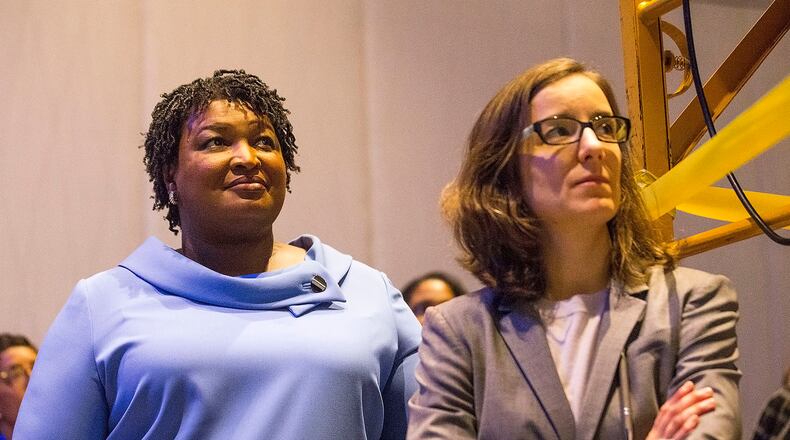Stacey Abrams’ campaign set another fundraising record in her second bid for governor, raising $113 million for a rematch she ultimately lost to Gov. Brian Kemp, according to filings Monday.
The Republican Kemp raised more than $78 million to beat the Democrat Abrams by more than 7.5 percentage points in November.
Abrams raised $27 million — then a record for a Georgia governor’s race — when she narrowly lost to Kemp in 2018. Kemp raised $21 million for that race.
But lawmakers created a mechanism in 2021 to let them raise unlimited funds through so-called leadership committees, and those bolstered the campaign coffers of both Abrams and Kemp, allowing checks of $1 million or more to flow in from individual donors.
Most candidates can’t legally operate such committees, and they face limits on how much donors can give.
Abrams’ leadership committee alone raised $59 million and Kemp’s $45 million, according to reports Monday.
Kemp ended 2022 with about $5.2 million in the bank, while Abrams’ leadership committee listed about $1.4 million in debt and her accounts had about $100,000 in cash on hand. Most of Abrams’ debt was to her media firm, AL Media.
The Atlanta Journal-Constitution reported before the election that despite her record fundraising, Abrams’ campaign was having money troubles. The AJC reported in December that she owed vendors big money.
Abrams campaign manager Lauren Groh-Wargo told Axios that a “cavalcade of negative press,” along with a steady drumbeat of polls showing her trailing Kemp, complicated fundraising efforts in the race’s final weeks.
But interviews with former staffers and operatives surfaced new details about profligate spending that led to a financial squeeze by the end of the campaign.
Several staffers said the campaign rented a home near Piedmont Park to be a “hype house” for TikTok videos that wound up largely neglected. Some aides commandeered the vacant five-bedroom craftsman-style house, now available to rent at $12,500 a month, as a makeshift office.
A pop-up shop and “swag truck” were assigned to dispense merchandise, such as T-shirts and hoodies, to win over young voters. But staffers grumbled that there was no apparent strategy behind the giveaways, which they said seemed careless and costly.
The clearest public signal of the campaign’s teetering finances came in the final two weeks of the race, a pivotal moment when the early voting period was ramping up. Rather than step up her TV buys, Abrams’ campaign cut spending on the airwaves by more than half, to less than $1 million.
At the time, Groh-Wargo framed the cutback as a way to shift resources toward digital outreach and on-the-ground canvassing. She has since acknowledged the decision was designed to contain expenses.
About the Author
Keep Reading
The Latest
Featured


